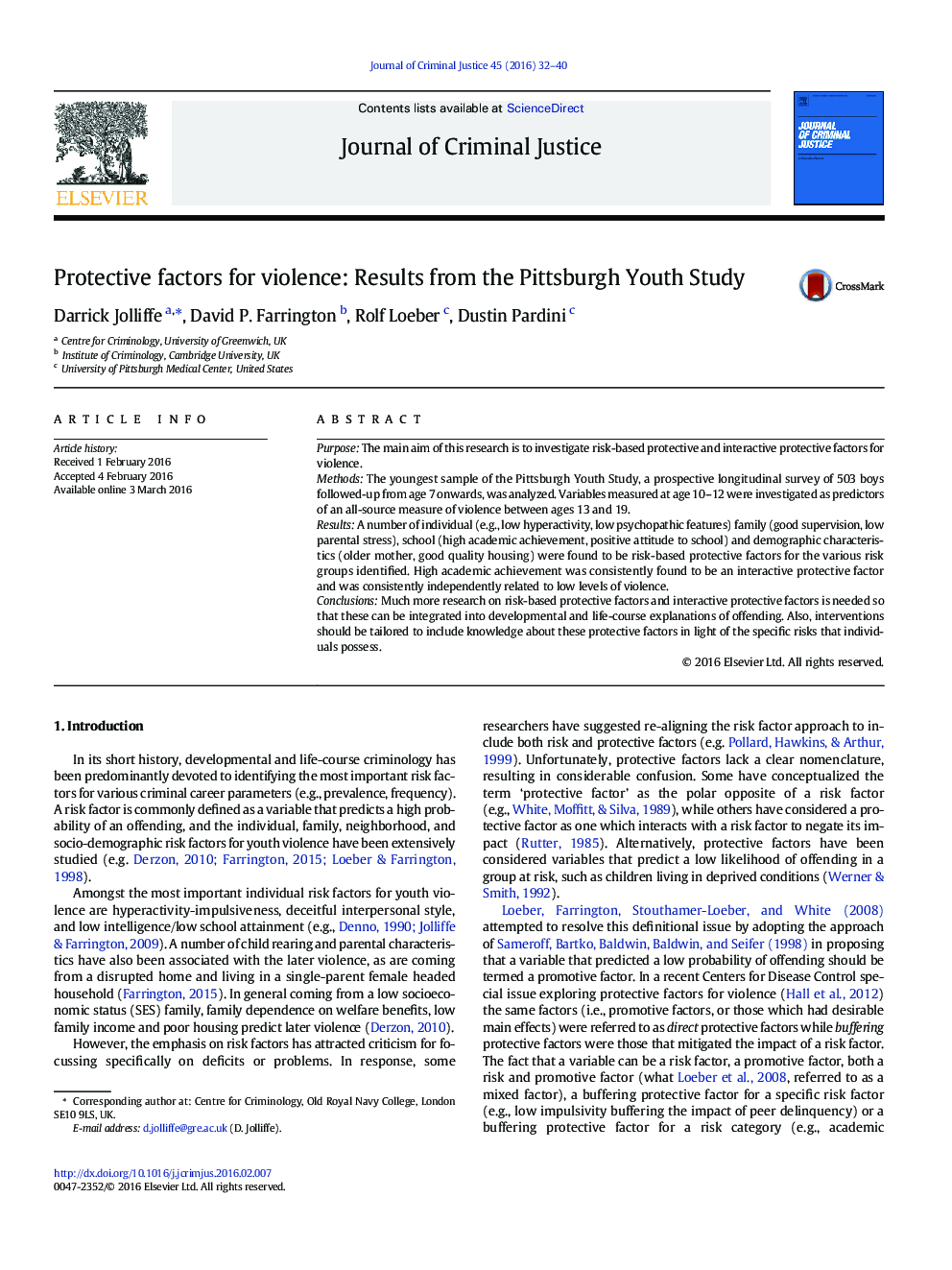| Article ID | Journal | Published Year | Pages | File Type |
|---|---|---|---|---|
| 882620 | Journal of Criminal Justice | 2016 | 9 Pages |
PurposeThe main aim of this research is to investigate risk-based protective and interactive protective factors for violence.MethodsThe youngest sample of the Pittsburgh Youth Study, a prospective longitudinal survey of 503 boys followed-up from age 7 onwards, was analyzed. Variables measured at age 10–12 were investigated as predictors of an all-source measure of violence between ages 13 and 19.ResultsA number of individual (e.g., low hyperactivity, low psychopathic features) family (good supervision, low parental stress), school (high academic achievement, positive attitude to school) and demographic characteristics (older mother, good quality housing) were found to be risk-based protective factors for the various risk groups identified. High academic achievement was consistently found to be an interactive protective factor and was consistently independently related to low levels of violence.ConclusionsMuch more research on risk-based protective factors and interactive protective factors is needed so that these can be integrated into developmental and life-course explanations of offending. Also, interventions should be tailored to include knowledge about these protective factors in light of the specific risks that individuals possess.
